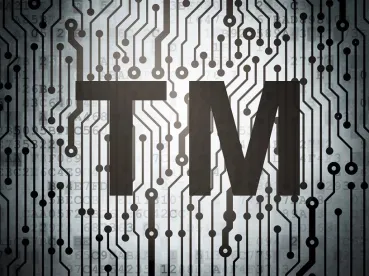On June 30, the Supreme Court issued an 8-1 holding in U.S. Patent & Trademark Office v. Booking.com B.V., finding that whether a “GENERIC.COM” mark qualifies for trademark protection depends on its ability to act as a source identifier to consumers. In other words, a “GENERIC.COM” mark may or may not actually be generic. Adding “.COM” to an otherwise generic, and unregistrable, mark does not automatically affect whether the mark qualifies for trademark protection.
To be protected under the Lanham Act, a mark must be distinctive. As such, generic terms alone cannot be protected as trademarks. These terms are not distinctive because they merely identify categories of goods or services (e.g., “wine”) and thus should remain available to all competitors to describe their goods or services. Generic terms differ from descriptive terms, which, though not inherently distinctive, may be protectible if they have acquired secondary meaning.[1] Descriptive terms refer to attributes of goods or services (e.g., “red” or “dry”) as opposed to naming a class of goods.
Avoiding genericism is often a struggle for large, well-known brands, industry leaders, and small applicants alike, since marks which identify a company’s goods or services are helpful in attracting consumers. So, can you avoid a “generic” rejection by adding .COM to your otherwise-generic mark? Well… it depends.
Case Background
In 2011 and 2012, the USPTO rejected four trademark applications for BOOKING.COM, filed by the travel and hotel booking company, Booking.com. The trademark examining attorney determined the marks were not protectable because they were generic, or alternately, descriptive but lacking secondary meaning. The Trademark Trial and Appeal Board affirmed this decision. Booking.com then took the battle to the federal courts, where the Eastern District of Virginia found “Booking.com” was entitled to trademark protection.[2] On appeal to the Fourth Circuit, the USPTO took a hardline stance – that adding .COM to an otherwise-generic mark could never create a non-generic mark and should always be rejected. The Circuit rejected this argument and affirmed the district court, holding that a GENERIC.COM mark may indicate the source of the goods or services to the public, and therefore is not automatically ineligible for trademark protection.
Following the Fourth Circuit’s decision in 2019, the USPTO filed for cert with the Supreme Court. The Office argued that other circuit courts had issued holdings opposite that of the Fourth Circuit and urged the Supreme Court to resolve the split and make GENERIC.COM marks automatically generic. According to the Office, a .COM suffix is no different than any other corporate indicator, like “Inc.” or “Company.” Thus, there is no reason that a .COM suffix could ever save an otherwise generic mark.
According to Booking.com, though, the question of genericism is one for the factfinder. Though the district court found “Booking.com” acted as a source identifier to consumers, other GENERIC.COM marks may not. The key question, Booking.com argued, is not whether the parts of the mark are generic, but whether the mark – as a whole – is generic.
The Holding
Justice Ginsburg, writing for a seven-Justice majority, sided with booking.com in rejecting the USPTO’s bright-line rule. The court held that a GENERIC.COM mark is protectable when the mark as a whole signifies a specific brand to consumers as opposed to an entire class of goods or services. Thus, because Booking.com was able to establish to the courts below that BOOKING.COM was not generic, that holding should stand.
Specifically, the Court emphasized two guiding principles in reaching its decision. First, generic terms, as discussed above, refer to a class of goods. Second, in determining whether a mark is sufficiently distinctive to qualify for trademark protection, the mark must be considered as a whole. A mark that includes a generic term is not per se generic (e.g., apple). “Booking.com” does not signify a class of goods. Consumers would not describe another site offering similar services, such as Travelocity, as a “Booking.com.” Therefore, “Booking.com” is not generic. Additionally, to consumers, “Booking.com” acts as a source identifier because it signifies a specific provider of hotel reservation services. The fact that “Booking.com” includes the generic term “Booking” does not render it unprotectable.
In issuing this holding, the Court established that a GENERIC.COM mark is a potentially protectible, descriptive mark. While the mark itself is weak, it may acquire secondary meaning, making it protectable. Here, the district court found Booking.com had acquired secondary meaning because it identified a specific brand of hotel reservation services. Similar GENERIC.COM marks may likewise be entitled to trademark protection.
The Bottom Line
Businesses who use a top-level domain such as .com in their name may be in luck since GENERIC.COM marks are not per se invalid, but only if the domain name also acts as a source identifier. While such a mark is not automatically generic, adding .COM is not a free pass. The question of whether a mark is generic remains a fact question, and a .COM company should be prepared to offer evidence that their consumers recognize the mark as a source indicator, rather than a category of goods or services.
Footnotes
[1] Secondary meaning is a new and additional meaning that attaches to a term when consumers come to associate that term with a specific product, service, brand, or source.
[2] Specifically, the court found that the mark was descriptive and had acquired secondary meaning as to hotel reservation services.




 />i
/>i